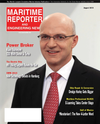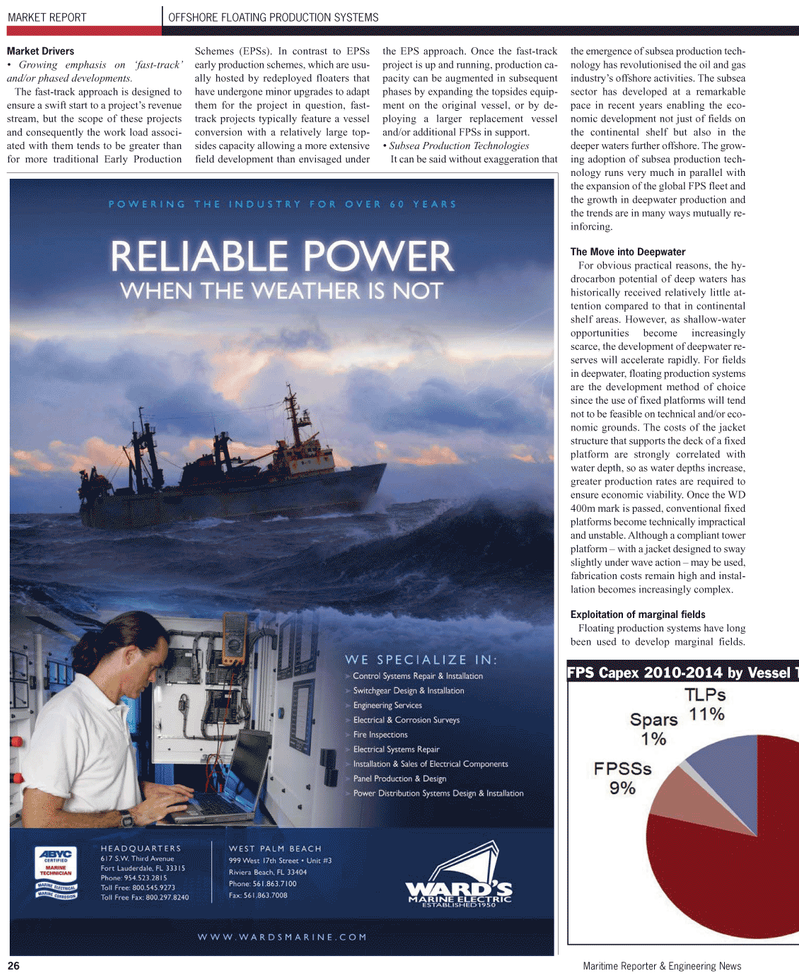
Page 26: of Maritime Reporter Magazine (August 2010)
The Electric Ship
Read this page in Pdf, Flash or Html5 edition of August 2010 Maritime Reporter Magazine
26 Maritime Reporter & Engineering News
Market Drivers • Growing emphasis on ‘fast-track’ and/or phased developments.
The fast-track approach is designed to ensure a swift start to a project’s revenue stream, but the scope of these projects and consequently the work load associ- ated with them tends to be greater than for more traditional Early Production
Schemes (EPSs). In contrast to EPSs early production schemes, which are usu- ally hosted by redeployed floaters that have undergone minor upgrades to adapt them for the project in question, fast- track projects typically feature a vessel conversion with a relatively large top- sides capacity allowing a more extensive field development than envisaged under the EPS approach. Once the fast-track project is up and running, production ca- pacity can be augmented in subsequent phases by expanding the topsides equip- ment on the original vessel, or by de- ploying a larger replacement vessel and/or additional FPSs in support. • Subsea Production Technologies
It can be said without exaggeration that the emergence of subsea production tech- nology has revolutionised the oil and gas industry’s offshore activities. The subsea sector has developed at a remarkable pace in recent years enabling the eco- nomic development not just of fields on the continental shelf but also in the deeper waters further offshore. The grow- ing adoption of subsea production tech- nology runs very much in parallel with the expansion of the global FPS fleet and the growth in deepwater production and the trends are in many ways mutually re- inforcing.
The Move into Deepwater
For obvious practical reasons, the hy- drocarbon potential of deep waters has historically received relatively little at- tention compared to that in continental shelf areas. However, as shallow-water opportunities become increasingly scarce, the development of deepwater re- serves will accelerate rapidly. For fields in deepwater, floating production systems are the development method of choice since the use of fixed platforms will tend not to be feasible on technical and/or eco- nomic grounds. The costs of the jacket structure that supports the deck of a fixed platform are strongly correlated with water depth, so as water depths increase, greater production rates are required to ensure economic viability. Once the WD 400m mark is passed, conventional fixed platforms become technically impractical and unstable. Although a compliant tower platform – with a jacket designed to sway slightly under wave action – may be used, fabrication costs remain high and instal- lation becomes increasingly complex.
Exploitation of marginal fields
Floating production systems have long been used to develop marginal fields.
MARKET REPORT OFFSHORE FLOATING PRODUCTION SYSTEMS
FPS Capex 2010-2014 by Vessel T

 25
25

 3rd Cover
3rd Cover
